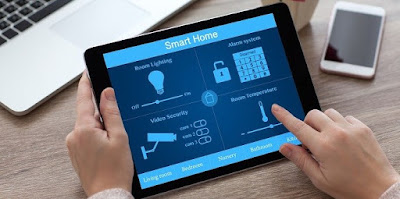How to Protect Your Smart Home From Security Vulnerabilities
By Patrick Sinclair, All Home Robotics
While the use of smart home devices is on the rise, experts predict there will be over 20 billion connected devices in the world by 2020, with more than half of them being in our homes, according to Gartner, Inc. If you think about it, it’s not hard to envision. How many smart devices are in your home? Smart assistant? Yep. Smart thermostat? Check. Smart lights? Of course.
When we talk about smart home devices, we often refer to them as IoT, or Internet of Things. IoT devices are essentially any device that connects to the Internet, such as smart thermostats, cameras and locks. Unfortunately, IoT users may potentially face security vulnerabilities — from a lack of authorization to privacy concerns. These vulnerabilities exist in a wide range of devices as well, from children’s toys to smart appliances and security alarms.
The best thing you can do is arm yourself with the knowledge of what the potential risks are. Here’s a look at some of the top smart home security vulnerabilities and how to help protect yourself against them.
Insecure Web Interface
An web interface is a page on your internet browser that accesses a smart device and its settings. If your web interface is not secure, your personal information may be vulnerable to hackers who may gain access to your entire network.A few ways to help prevent access through an insecure web interface are to change default usernames and passwords on all your devices to something unique and to make sure account lockouts occur after a few failed logins. Typically you want the account to lock after three or four failed attempts, which can be managed in the settings portion of the web interface. It might be inconvenient if you forget your login information and lock yourself out of your device and/or network, but it’s worth it to help prevent a breach in your network.
A password application that tracks all your passwords may be helpful. That way, the only password you have to remember is the one that gets you into the application. (If you’re unfamiliar with password managers, Consumer Reports provides a helpful overview.)
If you do lock yourself out of a device or network, however, you may need to manually reset the device, often referred to as a “hard reset.” This is usually done by pushing a button on the component. While a hard reset may not seem ideal, it is still better than having your information hacked.
Insufficient Authentication/Authorization
If you’re not protecting your devices and home network from unauthorized users, you may be leaving your smart devices, such as alarms and cameras, open to hackers. Typically, this type of vulnerability is a result of weak passwords, nonsecure passwords or a lack of two-step authentication. It’s crucial that you ensure your passwords are strong and that access is only given to those who absolutely need it.Additionally, you can turn on two-factor authorization to validate and verify access to your device each time a login occurs from a new device or location. Two-factor authorization is an added layer of security. Not only do you need to have your username and password, but you need an additional token or piece of information to gain access. For instance, if you have two-factor authentication on your security system account, you may need to enter a code that was sent to you via text in order to verify your login.
If you want to take things a step further, you can turn on re-authentication for devices that contain more secure features. Re-authentication occurs when anything is changed within the application. If a change occurs, you must enter your username and password again before continuing to use the device. Other scenarios for re-authentication might involve the application asking for credentials after a certain period of time with no activity, or when a user is accessing sensitive information.
Insecure Cloud Interface
Since so many smart devices operate in the cloud, it’s important that you be aware of potential risks. Cloud computing is essentially using the internet, instead of a hard drive on your device, to store and access data and programs, says PCMag.com. For the purposes of this discussion, this includes any smart device connected to the Internet, such as a smart thermostat, smart lights or smart camera.To help prevent hackers from accessing personal documents, photos and other information you’ve stored in the cloud, make sure your passwords are strong, that two-factor authorization is enabled and that failed login attempts are locked out after a few tries. Establishing these protections is similar to the steps we discussed earlier for securing your device’s web interface and can typically be managed in the security settings of your particular cloud interface.
While there are several types of smart home security vulnerabilities, it’s a good idea to take responsibility to help protect yourself. However, you can help mitigate many of these security threats by using strong passwords, setting up two-step authorization and locking multiple failed attempts out. Do your part and take these actions to help protect your smart home.
Link to the article: https://www.allstate.com/blog/protect-smart-home-from-security-vulnerabilities/
Related articles: https://santacruzarchitect.wordpress.com/2018/05/19/what-is-a-smart-home/
For further assistance in home security, click here for more: http://parkridgelocksmith.net/
For further assistance in home security, click here for more: http://parkridgelocksmith.net/




Comments
Post a Comment